
Officials of the Department of Science and Technology’s Philippine Council for Agriculture, Aquatic and Natural Resources Research and Development (DOST-PCAARRD) explain to the members of the media the importance of the SIPAG-FIESTA. To be held at the Council’s headquarters on March 2-4, the event reflects the vision and direction of science and technology (S&T) as laid down in the Council’s Strategic Industry S&T Program for Agri-Aqua Growth (SIPAG). It also embodies the Council’s commitment to
...
 The Philippine Council for Agriculture, Aquatic and Natural Resources Research and Development of the Department of Science and Technology (DOST-PCAARRD) conducted another painting contest for high school students to drumbeat the Council’s forthcoming SIPAG FIESTA.
The Philippine Council for Agriculture, Aquatic and Natural Resources Research and Development of the Department of Science and Technology (DOST-PCAARRD) conducted another painting contest for high school students to drumbeat the Council’s forthcoming SIPAG FIESTA.
To be held at the Council’s headquarters on March 2-4, SIPAG FIESTA will highlight the best of DOST-PCAARRD’s R&D initiatives from 2010 to 2016.
Twenty-six students from different high schools in Laguna competed in the contest,
...
 The Philippine Council for Agriculture, Aquatic and Natural Resources Research and Development of the Department of Science and Technology (DOST-PCAARRD) conducted another painting contest for high school students to drumbeat the Council’s forthcoming SIPAG FIESTA.
The Philippine Council for Agriculture, Aquatic and Natural Resources Research and Development of the Department of Science and Technology (DOST-PCAARRD) conducted another painting contest for high school students to drumbeat the Council’s forthcoming SIPAG FIESTA.
To be held at the Council’s headquarters on March 2-4, SIPAG FIESTA will highlight the best of DOST-PCAARRD’s R&D initiatives from 2010 to 2016.
 Carrageenan extracted from seaweeds and further degraded through irradiation may be the latest breakthrough in Philippine agriculture.
Carrageenan extracted from seaweeds and further degraded through irradiation may be the latest breakthrough in Philippine agriculture.
In multi-location trials conducted in Bulacan, Nueva Ecija, Laguna, and Iloilo, the carrageenan plant growth regulator (CPGR) applied at low concentrations in rice has been found to enhance the yield by 15–30%.
In Bulacan, the application of 20 ml/li of the plant growth promoter in addition to three and six bags of fertilizer per hectare led to an increase grain
...
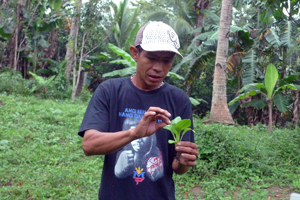 Farmer-cooperator and President of Barangay Bagong Silang farmers association Louie Carollo reported that vegetables grown organically yield bigger produce compared with vegetables grown using commercial fertilizers and pesticides. Carollo is one of the beneficiaries of the project, Gender-Responsive Organic Vegetable Production Livelihood Enterprise for Low-Income Communities of Los Baños, Laguna, which started in July 2015.
Farmer-cooperator and President of Barangay Bagong Silang farmers association Louie Carollo reported that vegetables grown organically yield bigger produce compared with vegetables grown using commercial fertilizers and pesticides. Carollo is one of the beneficiaries of the project, Gender-Responsive Organic Vegetable Production Livelihood Enterprise for Low-Income Communities of Los Baños, Laguna, which started in July 2015.
The project is funded by the Philippine Council for Agriculture,
...
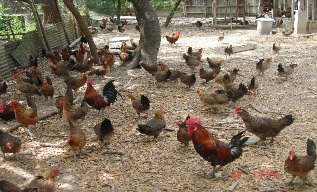 Native chicken meat has always been preferred by consumers over that of commercial broilers due to its unique taste, distinct flavor and texture, presence of nutraceutical compounds (functional food), and lower fat content.
Native chicken meat has always been preferred by consumers over that of commercial broilers due to its unique taste, distinct flavor and texture, presence of nutraceutical compounds (functional food), and lower fat content.
Being free ranged, native chicken is generally perceived as free from antibiotics and other synthetic chemical residues. The global trend of shifting consumer preferences toward organic and naturally produced products in recent years justifies the premium price offered for native
...
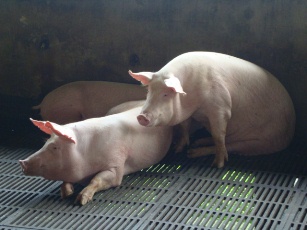 Swine production in the Philippines is a P191-billion industry and is the largest among the livestock and poultry industries of the country. The Philippine swine industry is ranked 8th in the world, in terms of the volume of pork production and number of breeding sows.
Swine production in the Philippines is a P191-billion industry and is the largest among the livestock and poultry industries of the country. The Philippine swine industry is ranked 8th in the world, in terms of the volume of pork production and number of breeding sows.
Despite being dynamic and technologically advance, the local pig industry is still confronted with inefficiency of production due to low sow productivity. Thus, the Philippine Council for Agriculture, Aquatic and Natural
...
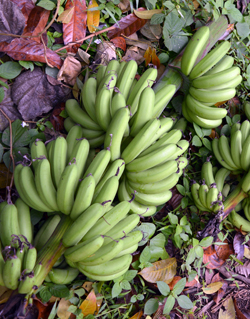 Banana is an important fruit crop in the Philippines due to its potential both in the local and international market. The Philippines is the 3rd largest producer of banana in the world next to India and China and is the 4th largest agricultural produce of the Philippines in 2011 recorded at 9.16M metric tons (mt) valued at US$ 2.32B.
Banana is an important fruit crop in the Philippines due to its potential both in the local and international market. The Philippines is the 3rd largest producer of banana in the world next to India and China and is the 4th largest agricultural produce of the Philippines in 2011 recorded at 9.16M metric tons (mt) valued at US$ 2.32B.
The Cavendish banana is the export variety constituting 50% of the country’s production and provides employment to almost 330,000 Filipinos. On the other hand,
...
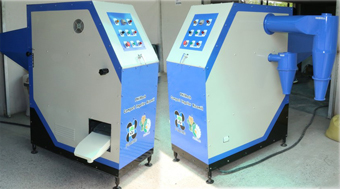 Rice farms in the country have low productivity not only as result of poor crop management but also because of low mechanization level. Some major activities have to be mechanized in order to improve productivity as well as reduce costs. Mechanization is needed in crop establishment, harvesting, threshing, drying, and milling. It can also increase brown rice production. The direct effects of mechanization on crop yield include timeliness, precision in the conduct of operations, especially in hill seeding
Rice farms in the country have low productivity not only as result of poor crop management but also because of low mechanization level. Some major activities have to be mechanized in order to improve productivity as well as reduce costs. Mechanization is needed in crop establishment, harvesting, threshing, drying, and milling. It can also increase brown rice production. The direct effects of mechanization on crop yield include timeliness, precision in the conduct of operations, especially in hill seeding
...
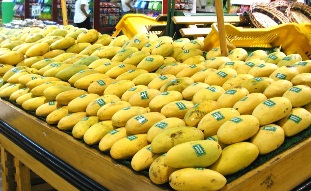 The Philippines ranks 12th among the top producers of mango in the world, with 2% share in production (FAO, 2012). It is also the third most important fruit crop based on export volume in the Philippines, next to banana and pineapple. It has very high potential as fresh or processed export product to other untapped export destinations. However, mango production in the Philippines is still constrained by a number of problems that limit its full potential. These include occurrence of pests and
The Philippines ranks 12th among the top producers of mango in the world, with 2% share in production (FAO, 2012). It is also the third most important fruit crop based on export volume in the Philippines, next to banana and pineapple. It has very high potential as fresh or processed export product to other untapped export destinations. However, mango production in the Philippines is still constrained by a number of problems that limit its full potential. These include occurrence of pests and
...
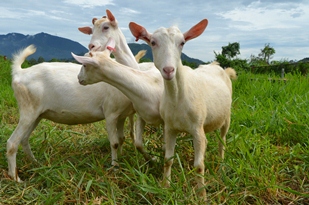 At the moment, there is a very small dairy goat inventory, which is barely 6,379 head or 0.17% of the total goat population. Of this meager herd, only about 600 head are in the milk line, 70% of which are suspected to be harboring subclinical mastitis. As a result, the production of quality milk decreases. Backyard milk production stands at 0.5li/day with commercial farms producing barely a little over 1li/day. Lactation length is also compromised at 90 days for the backyard farms and 180 days for
At the moment, there is a very small dairy goat inventory, which is barely 6,379 head or 0.17% of the total goat population. Of this meager herd, only about 600 head are in the milk line, 70% of which are suspected to be harboring subclinical mastitis. As a result, the production of quality milk decreases. Backyard milk production stands at 0.5li/day with commercial farms producing barely a little over 1li/day. Lactation length is also compromised at 90 days for the backyard farms and 180 days for
...
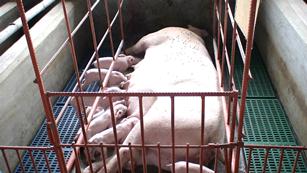 Swine production in the Philippines is a P191-billion industry and is the largest among the livestock and poultry industries of the country. It ranks next to rice with 18.28% contribution to the total value of agricultural production. Swine production plays a major role in ensuring the country’s food security by providing about 60% of the total animal meat consumption of Filipinos. The Philippine swine industry is ranked eighth in the world in terms of the volume of pork production and number of
Swine production in the Philippines is a P191-billion industry and is the largest among the livestock and poultry industries of the country. It ranks next to rice with 18.28% contribution to the total value of agricultural production. Swine production plays a major role in ensuring the country’s food security by providing about 60% of the total animal meat consumption of Filipinos. The Philippine swine industry is ranked eighth in the world in terms of the volume of pork production and number of
...
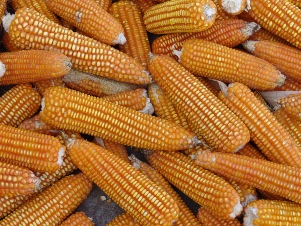 Corn is the second largest planted crop next to rice, of which 66% is yellow corn (YC). Around 90% of YC is used as feeds for livestock and poultry. It accounts for 50-60% of a typical mixed feed. The YC is one of the indispensable inputs to swine and poultry production providing livelihood to around 1.5 million corn farmers.
Corn is the second largest planted crop next to rice, of which 66% is yellow corn (YC). Around 90% of YC is used as feeds for livestock and poultry. It accounts for 50-60% of a typical mixed feed. The YC is one of the indispensable inputs to swine and poultry production providing livelihood to around 1.5 million corn farmers.
An equally important feed resource of the Philippines is copra meal, which is primarily being utilized as animal feed. As the top producer of copra in the world, the
...
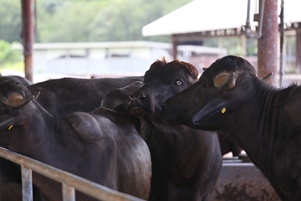 Milk is one of the most critical food commodities in the Philippines. About 16% of Filipinos, especially preschoolers and senior citizens, are highly dependent on it. In 2014, local production was 19.73 million liters, of which about 34.77% is supplied by buffaloes (Philippine Statistics Authority, 2015). To achieve a significant increase in milk production, however, the industry needs more genetically improved animals and enhancement of handling and processing efficiency of milk to minimize
Milk is one of the most critical food commodities in the Philippines. About 16% of Filipinos, especially preschoolers and senior citizens, are highly dependent on it. In 2014, local production was 19.73 million liters, of which about 34.77% is supplied by buffaloes (Philippine Statistics Authority, 2015). To achieve a significant increase in milk production, however, the industry needs more genetically improved animals and enhancement of handling and processing efficiency of milk to minimize
...
 The Philippine Council for Agriculture Aquatic and Natural Resources Research and Development (PCAARRD) and the Science and Technology Information Institute (STII), both of the Department of Science and Technology, gathered more than 60 media representatives, who are engaged in agriculture-aquatic concerns, for the promotion of SIPAG FIESTA.
The Philippine Council for Agriculture Aquatic and Natural Resources Research and Development (PCAARRD) and the Science and Technology Information Institute (STII), both of the Department of Science and Technology, gathered more than 60 media representatives, who are engaged in agriculture-aquatic concerns, for the promotion of SIPAG FIESTA.
To be held on March 2 to 4 at the PCAARRD complex, SIPAG FIESTA will showcase the best of the technologies generated by the country’s research and
...

